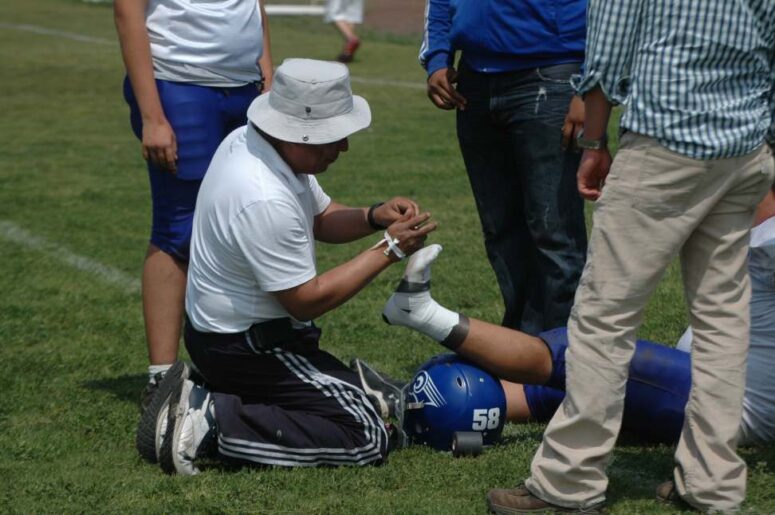Tigerexch, Skyinplay, Playinexch, T20 Exchange: Sprains, strains, and fractures – oh my! These are just a few examples of the common sports injuries that athletes face every day. Whether you’re a weekend warrior or a professional athlete, understanding the risk factors associated with these injuries is crucial for staying in the game. From overuse injuries caused by repetitive motions to traumatic injuries resulting from collisions or falls, there are several factors that can increase your risk of getting injured on the field or court.
One of the main risk factors for sports injuries is a lack of proper warm-up and conditioning. It’s easy to get caught up in the excitement of the game and neglect the time needed to properly prepare your body for the physical demands. But taking a few extra minutes to warm up your muscles and joints can make all the difference in preventing injuries. Proper conditioning, including strength training and flexibility exercises, is also key to reducing your risk. By ensuring that your body is strong, flexible, and well-prepared for the demands of your sport, you can significantly decrease the chances of experiencing a debilitating injury. So, lace up your sneakers, grab your water bottle, and make a commitment to prioritize proper warm-up and conditioning
- � your body will thank you!
- � Proper warm-up and conditioning are crucial for preventing sports injuries
- � Taking a few extra minutes to warm up muscles and joints can make a significant difference
- � Strength training and flexibility exercises are key in reducing the risk of injury
- � Ensuring that your body is well-prepared for the demands of your sport decreases chances of debilitating injuries
- � Make a commitment to prioritize proper warm-up and conditioning for a healthier body
Understanding the Role of Proper Conditioning in Injury Prevention
Proper conditioning plays a vital role in preventing sports injuries. It serves as the foundation for physical well-being and athletic performance. When athletes neglect to establish a solid conditioning routine, they put themselves at a greater risk of injury.
Conditioning enhances the strength, flexibility, and endurance necessary for peak performance. By engaging in regular strength training exercises, athletes can build the necessary muscle support to protect their joints and bones. Furthermore, incorporating flexibility training helps maintain a wide range of motion and reduces the risk of muscle strains and tears. Endurance training, on the other hand, allows athletes to prolong their physical effort without succumbing to fatigue, which may lead to poor form and eventually, injury. The combination of strength, flexibility, and endurance acquired through proper conditioning creates a solid athletic foundation, setting the stage for safer and more optimal sports performance.
Why is understanding the role of proper conditioning important in injury prevention?
Understanding the role of proper conditioning is important in injury prevention because it helps athletes and individuals prepare their bodies for the physical demands of their activities, reducing the risk of injury.
What are some common sports injuries and risk factors?
Some common sports injuries include sprains, strains, fractures, dislocations, and concussions. Risk factors for these injuries include poor conditioning, inadequate warm-up, overuse of muscles or joints, improper technique, and inadequate rest and recovery.
How does proper conditioning help prevent injuries?
Proper conditioning helps prevent injuries by strengthening muscles, improving flexibility, enhancing balance and coordination, and increasing overall fitness. This prepares the body to withstand the physical stresses and strains of sports and other physical activities.
How can inadequate conditioning contribute to sports injuries?
Inadequate conditioning can contribute to sports injuries by leaving the muscles weak, the joints unstable, and the body less prepared to handle the physical demands of the activity. This increases the risk of strains, sprains, and other injuries.
What are some key components of proper conditioning?
Some key components of proper conditioning include strength training, flexibility exercises, cardiovascular endurance training, balance and coordination exercises, and regular rest and recovery.
How often should one engage in proper conditioning to prevent injuries?
It is recommended to engage in proper conditioning at least three to five times a week for a minimum of 30 minutes each session. However, the frequency and duration may vary depending on individual fitness levels and specific activity requirements.
Can proper conditioning help with injury rehabilitation?
Yes, proper conditioning can help with injury rehabilitation. It can aid in strengthening the injured muscles, improving range of motion, and restoring overall fitness, allowing individuals to recover and return to their activities more quickly.
Is proper conditioning only important for athletes?
No, proper conditioning is important for everyone, not just athletes. Engaging in regular conditioning exercises can help individuals of all ages and fitness levels improve their overall health, reduce the risk of injuries in daily life, and enhance their physical performance.
Can proper conditioning completely eliminate the risk of sports injuries?
While proper conditioning significantly reduces the risk of sports injuries, it cannot completely eliminate the possibility of injuries. Other factors like accidents, collisions, and external forces can still cause injuries. However, proper conditioning can minimize the severity and frequency of injuries.
Have A Look :-

